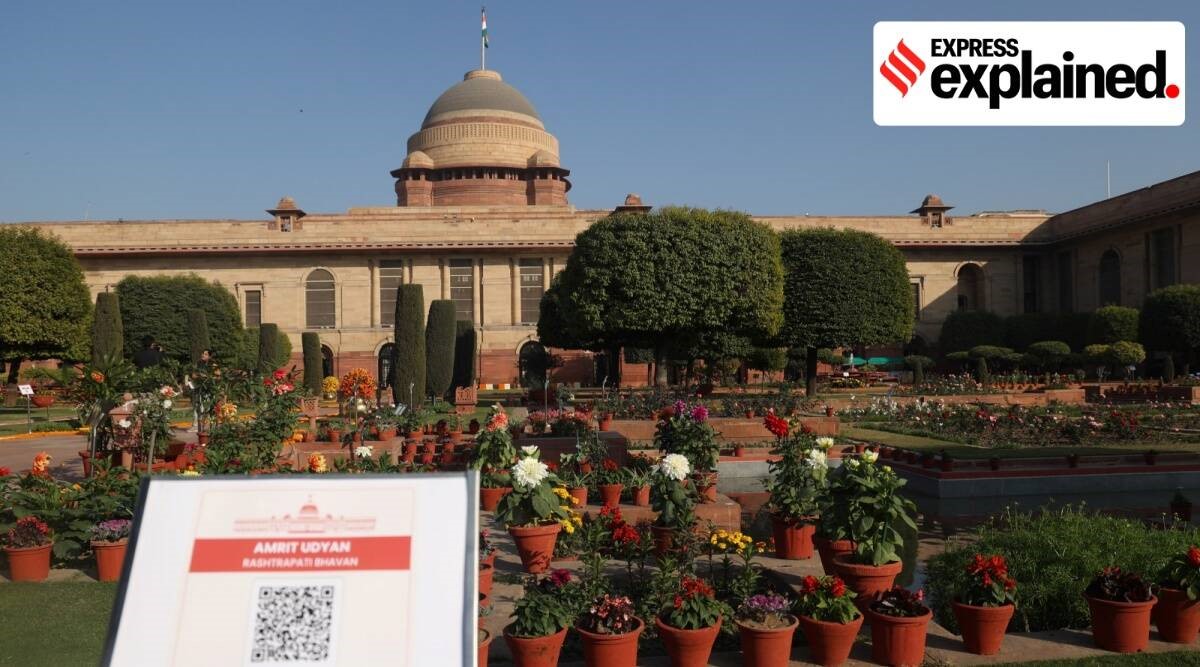Description

Disclaimer: Copyright infringement not intended.
Context: The iconic Mughal Gardens at the Rashtrapati Bhavan (President’s House) in Delhi have been renamed. The collective identity of all the gardens at Rashtrapati Bhavan will be ‘Amrit Udyan’. Earlier there were descriptive identities, now a new identity has been given to the gardens.
Details:
History of Mughal Gardens:
- The Mughals were known to appreciate gardens.
- In Babur Nama, Babur says that his favourite kind of garden is the Persian charbagh style (literally, four gardens). The charbagh structure was intended to create a representation of an earthly utopia – jannat – in which humans co-exist in perfect harmony with all elements of nature.
- Defined by its rectilinear layouts, divided in four equal sections, these gardens can be found across lands previously ruled by the Mughals. From the gardens surrounding Humanyun’s Tombin Delhi to the Nishat Bagh in Srinagar, all are built in this style – giving them the moniker of Mughal Gardens.
- A defining feature of these gardens is the use of waterways, often to demarcate the various quadrants of the garden. These were not only crucial to maintain the flora of the garden, they also were an important part of its aesthetic. Fountains were often built, symbolising the “cycle of life.”
- In 1911, the British decided to shift the Indian capital from Calcutta to Delh This would be a mammoth exercise, involving construction of a whole new city – New Delhi – that would be built as the British Crown’s seat of power in its most valuable colony.
- About 4,000 acres of land was acquired to construct the Viceroy’s House with Sir Edwin Lutyens being given the task of designing the building on Raisina Hill. Lutyens’ designs combined elements of classical European architecture with Indian styles, producing a unique aesthetic that defines Lutyens’ Delhi till date.
- While initial plans involved creating a garden with traditional British sensibilities in mind, Lady Hardinge, the wife of the then Viceroy, urged planners to create a Mughal-style garden.
- It is said that she was inspired by the book Gardens of the Great Mughals (1913) by Constance Villiers-Stuart as well as her visits to Mughal gardens in Lahore and Srinagar.
.jpeg)
https://indianexpress.com/article/explained/rashtrapati-bhavans-mughal-gardens-renamed-a-brief-history-8409859/















